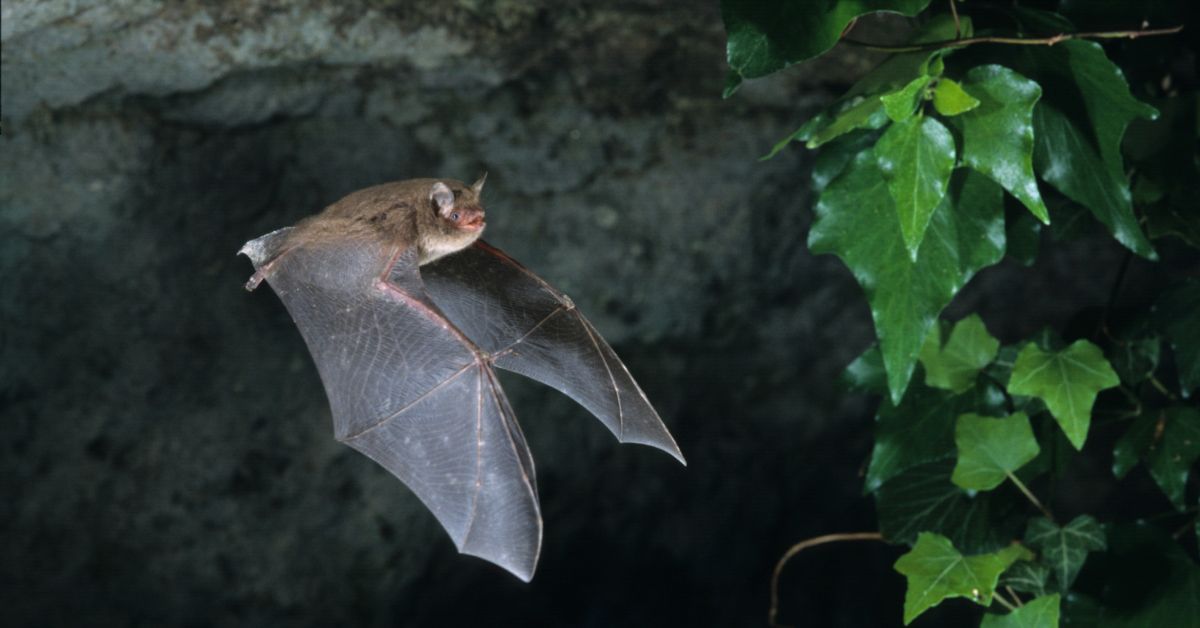Bats are frequently encompassed by myths and misguided judgments, one of the most common being the conviction that bats are Blind. In any case, the reality is very distinctive. In this article, titled “Are Bats Blind? ” we will dive into the interesting world of bat vision, disperse common myths, and uncover captivating actualities approximately these momentous creatures.
The state “Are Bats Blind? ” has been a point of interest and misguided judgment for a long time. These mammals are nighttime creatures, which implies they are dynamic at night. This way of life has driven numerous to accept that bats cannot see. Be that as it may, bats have special adjustments that permit them to explore and chase productively in the dark.
The Myth of Blind Bats

The myth that these mammals are blind likely stems from their nighttime propensities and dependence on echolocation. Numerous individuals accept that since these mammals utilize echolocation to discover their way around, they must not be able to see. In reality, most of these mammals have exceptionally great eyesight.
Echolocation: Nature’s Sonar
While talking about “Are Bats Blind? ” it’s basic to get it echolocation. Echolocation is a organic sonar utilized by these mammals to explore and chase in the dull. These mammals transmit high-frequency sounds that bounce off objects and return as echoes. By deciphering these echoes, these mammals can decide the area, estimate, and indeed surface of objects around them.
Bat Visual perception: Day and Night

Contrary to the myth, these mammals are not dazzle. Most of these mammals have eyes that are adjusted to low-light conditions, giving them amazing night vision. A few species of these mammals can see way better in the dull than people can. These mammals have two sorts of vision: scotopic vision for low-light conditions and photopic vision for brighter light.
Scotopic Vision
Scotopic vision permits these mammals to see in exceptionally moo light. This sort of vision is due to the nearness of a tall number of pole cells in their retinas. Bar cells are delicate to moo light levels, empowering these mammals to see well amid the night.
Photopic Vision
Photopic vision is less common in these mammals but is display in a few species. This sort of vision permits these mammals to see in brighter light conditions. These mammals that are dynamic amid dusk or day break frequently have superior photopic vision.
Color Vision in Bats
“Are Bats Blind? ” would be deficient without tending to color vision. A few these mammals can see in color, in spite of the fact that their color vision is not as created as that of people. These mammals have less cone cells, which are dependable for color vision. In any case, a few natural product these mammals have sufficient cone cells to recognize between distinctive colors.
Varieties in Bat Vision

These mammals are a assorted gather of warm blooded creatures with over 1,400 species. As such, there is a significant variety in their visual capabilities. A few these mammals have great vision, whereas others depend more on echolocation.
Natural product Bats
Fruit bats, moreover known as flying foxes, have expansive eyes and great vision. They depend on their vision to discover ready natural products and explore through timberlands. These mammalsare for the most part dynamic amid sundown and have great photopic vision.
Microbats
Microbats are littler bats that fundamentally utilize echolocation to chase creepy crawlies. Whereas they depend intensely on echolocation, they are not dazzle. Microbats have great scotopic vision, permitting them to see in the dark.
The Part of Vision in Bat Behavior
Vision plays a critical part in bat behavior. Understanding “Are Bats Blind? ” makes a difference us appreciate how These mammals utilize their vision in conjunction with echolocation to survive and flourish in their environments.

Chasing and Foraging
These mammals utilize a combination of vision and echolocation to chase and scrounge. Natural product these mammals utilize their sharp vision to find natural products, whereas insectivorous these mammals utilize echolocation to capture creepy crawlies in mid-air. A few bats utilize both vision and echolocation to discover their prey, particularly in complex environments.
Navigation
Bats depend on their vision to explore amid the early evening and day break when there is still a few light. Echolocation is utilized more broadly in total haziness. These mammals can moreover utilize visual points of interest to offer assistance them discover their way back to their roosts.
Social Interaction
Vision is fundamental for social intelligent among these mammals. These mammals can recognize each other and communicate utilizing visual signals, particularly species that live in expansive colonies. Visual signals are frequently utilized amid mating and in building up social hierarchies.
How People Advantage from Bat Vision Research

Research on bat vision has given bits of knowledge that advantage people in different ways. The consider of bat echolocation and vision has motivated progressions in innovation and therapeutic research.
Mechanical Advancements
Bat echolocation has propelled the improvement of sonar and radar innovation. Understanding how These mammals explore and chase in the dull has driven to advancements in route frameworks for the daze and changes in automated vision systems.
Therapeutic Research
The interesting properties of bat vision and echolocation have suggestions for therapeutic investigate. Examining how bats recover harmed eye cells can give bits of knowledge into treating human eye infections. Moreover, bat echolocation investigate contributes to understanding hearing misfortune and creating way better hearing aids.
FAQs around Bat Vision
Q1: Are bats truly blind?
A: No, bats are not daze. Most bats have great vision, especially in low-light conditions.
Q2: How does bat see at night?
A: Bats have adjusted to see in low-light conditions utilizing a tall number of bar cells in their retinas. They too utilize echolocation to explore and chase in total darkness.
Q3: Can bats see in color?
A: A few bats, particularly natural product these mammals, can see in color, in spite of the fact that their color vision is not as created as that of humans.
Q4: Do all bats utilize echolocation?
A: Not all these mammals utilize echolocation. Natural product bats basically depend on their vision, whereas microbats utilize echolocation to chase and navigate.
Q5: How does bat vision advantage humans?
A: Inquire about on bat vision and echolocation has propelled innovative headways in sonar, radar, and route frameworks. It too contributes to restorative inquire about on eye illnesses and hearing loss.
Conclusion
In conclusion, the express highlights the interesting and frequently misconstrued perspectives of bat vision. These mammals are not dazzle; they have one of a kind adjustments that permit them to see in low-light conditions and utilize echolocation to explore in total haziness. Understanding bat vision makes a difference us appreciate these surprising animals and their part in the biological system. Besides, inquire about on bat vision proceeds to rouse innovative and therapeutic headways that advantage people. So, the following time you listen somebody inquire, you’ll know that the reply is a resonating no. These mammals are prepared with uncommon vision that empowers them to flourish in their nighttime world.

